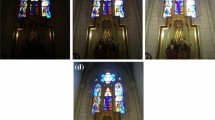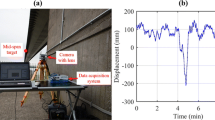Abstract
Optical flow approaches for motion estimation calculate vector fields which determine the apparent velocities of objects in time-varying image sequences. Image motion estimation is a fundamental issue in low-level vision and is used in many applications in image sequence processing, such as robot navigation, object tracking, image coding and structure reconstruction. The accuracy of optical flow estimation algorithms has been improving steadily as evidenced by results on the Middlebury optical flow benchmark. Actually, several methods are used to estimate the optical flow, but a good compromise between computational cost and accuracy is hard to achieve. This work presents a combined local–global total variation approach with structure–texture image decomposition. The combination is used to control the propagation phenomena and to gain robustness against illumination changes, influence of noise on the results and sensitivity to outliers. The resulted method is able to compute larger displacements in a reasonable time.









Similar content being viewed by others
References
Horn, B., Schunck, B.: Determining optical flow. Artif. Intelligence 17, 185–203 (1981)
Nagel, H.-H.: Constraints for the estimation of displacement vector fields from image sequences. In: Proceedings of eighth international joint conference on artificial intelligence, vol 2, pp 945–951, Karlsruhe, West Germany, Aug (1983)
Lucas, B., Kanade, T.: An iterative image registration technique with an application to stereo vision. In: Proceedings seventh international joint conference on artificial intelligence, pp 674–679, Vancouver, Canada, Aug (1981)
Bigün, J., Granlund, G.H., Wiklund, J.: Multidimensional orientation estimation with applications to texture analysis and optical flow. IEEE Trans. Pattern Anal. Mach. Intell. 13(8), 775–790 (1991)
Nagel, H.-H., Gehrke, A.: Spatiotemporally adaptive estimation and segmentation of oF-fields. In: H. Burkhardt and B. Neumann (eds), Computer Vision- ECCV ’98, volume 1407 of lecture notes in computer science, pp 86–102, Springer, Berlin, (1998)
Tretiak, O., Pastor, L.: Velocity estimation from image sequences with second order differential operators. In: Proceedings seventh international conference on pattern recognition, pp 16–19, Montreal, Canada, July (1984)
Barron, J.L., Fleet, D.J., Beauchemin, S.S.: Performance of optical flow techniques. Int. J. Comput. Vis. 12(1), 43–77 (1994)
Galvin, B., McCane, B., Novins, K., Mason, D., Mills, S.: Recovering motion fields: an analysis of eight optical flow algorithms. In: Proceedings 1998 British machine vision conference, Southampton, England, Sept (1998)
Bruhn, A., Weickert, J., Schnörr, C.: Lucas/Kanade meets Horn/Schunk: combining local and global optical flow methods. IJCV 61(3), 211–231 (2005)
Drulea, M., Nedevschi, S.: Total variation regularization of local-global optical flow. In: 2011 14th International IEEE Conference on Intelligent Transportation Systems (ITSC), pp. 318–323. IEEE (2011)
Aujol, J., Gilboa, G., Chan, T., Osher, S.: Structure–texture image decomposition-modeling, algorithms, and parameter selection. Int. J. Comput. Vis. 67(1), 111–136 (2006)
Aujol, F., Chambolle, A.: Dual norms and image decomposition models. Int. J. Comput. Vis. 63(1), 85–104 (2005)
Rudin, L., Osher, S., Fatimi, End E.: Nonlinear total variation based noise removal algorithms. Physica D 60, 259–268 (1992)
Cha, T.F., Osher, S., Shen, J.: The digital TV filter and nonlinear denoising. IEEE Trans. Image Process. 10, 231–241 (2001)
Osher, S., Rudin, L.: Total variation based image restoration with free local constraints. In: Proceedings IEEE ICIP, vol I, Austin, TX, pp 31–35, (1994)
Gilles, J.: Décomposition et détection de structures géométriques en imagerie. Doctoral Thesis, Ecole Normale Supérieure de Cachan, (2006)
Meyer, Y.: Oscillating patterns in image processing and in some nonlinear evolution equations. The Fifteenth Dean Jacquelines B. Lewis Memorial Lectures, American Mathematical Society, (2001)
Chambolle, A.: An algorithm for total variation minimization and application. J. Math. Imaging vis. 20(1–2), 89–97 (2004)
Baker, S., et al.: A database and evaluation methodology for optical flow. Int. J. Comput. Vis. 92(1), 1–31 (2011)
Taşdemir, K., Çetin, A.E.: Content-based video copy detection based on motion vectors estimated using a lower frame rate. Signal Image Video Process. 8(6), 1049–1057 (2014)
Portelo, A., Figueiredo, M.A., Lemos, J.M., Marques, J.S.: Moving horizon estimation of pedestrian interactions using multiple velocity fields. Signal Image Video Process. 1–9 (2014). doi:10.1007/s11760-014-0620-0
Perona, P., Malik, J.: Scale space and edge detection using anistropic diffusion, In: Proceedings IEEE computer society workshop on computer vision (1987),16–12
Durand, Frédo, Dorsey, Julie: Fast bilateral filtering for the display of high-dynamic-range images, In: SIGGRAPH ’02: Proceedings of the 29th annual conference on computer graphics and interactive techniques, pp 257–266, New York, NY, USA ACM. (2002)
Bournez, O.:’ Cours 5.2—Complexit’e parallèle’, LIX, Ecole Polytechnique
Bao, L., Yang, Q., Jin, H.: Fast edge-preserving patchmatch for large displacement optical flow. In: CVPR’14 Proceedings of the 2014 IEEE Conference on Computer Vision and Pattern Recognition, pp. 3534–3541. IEEE (2014)
Mahraz, M.A., Riffi, J., Tairi, H.: Motion estimation using the fast and adaptive bidimensional empirical mode decomposition. J. Real-Time Image Process. 9(3), 491–501 (2014)
Sun, D., Roth, S., Black, M.J.: A quantitative analysis of current practices in optical flow estimation and the principles behind them. Int. J. Comput. Vis. 106(2), 115–137 (2014)
Lu, J., Yang, H., Min, D., Do, M.N.: Patch match filter: Efficient edge-aware filtering meets randomized search for fast correspondence field estimation. In: 2013 IEEE Conference on Computer Vision and Pattern Recognition (CVPR), pp. 1854–1861. IEEE (2013)
Sun, D., Wulff, J., Sudderth, E.B., Pfister, H., Black, M.J.: A fully-connected layered model of foreground and background flow. In: 2013 IEEE Conference on Computer Vision and Pattern Recognition (CVPR), pp. 2451–2458. IEEE (2013)
Mohamed, M., Rashwan, H., Mertsching, B., Garcia, M., Puig, D.: Illumination-robust optical flow approach using local directional pattern. Submitted to IEEE TCSVT (2013)
Sun, D., Roth, S., Black, M.J.: Secrets of optical flow estimation and their principles, In: IEEE conference on computer vision and pattern recognition (CVPR). (2010)
Author information
Authors and Affiliations
Corresponding author
Rights and permissions
About this article
Cite this article
Bellamine, I., Tairi, H. Optical flow estimation based on the structure–texture image decomposition. SIViP 9 (Suppl 1), 193–201 (2015). https://doi.org/10.1007/s11760-015-0772-6
Received:
Revised:
Accepted:
Published:
Issue Date:
DOI: https://doi.org/10.1007/s11760-015-0772-6




